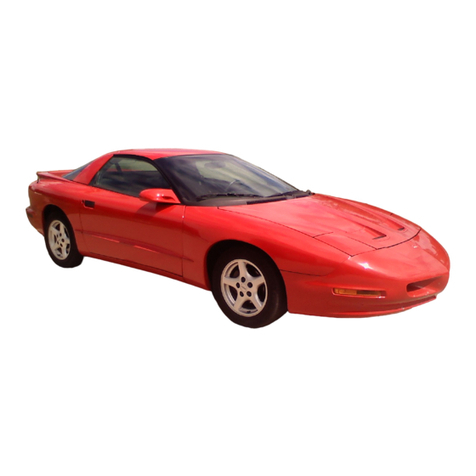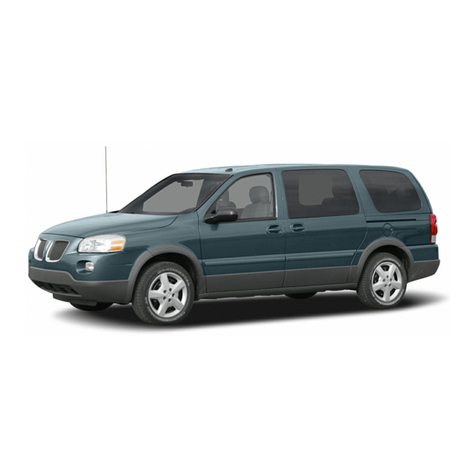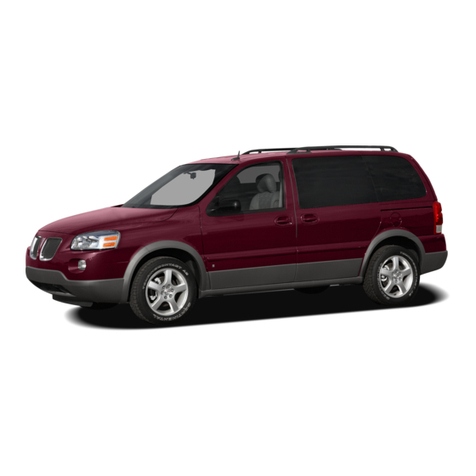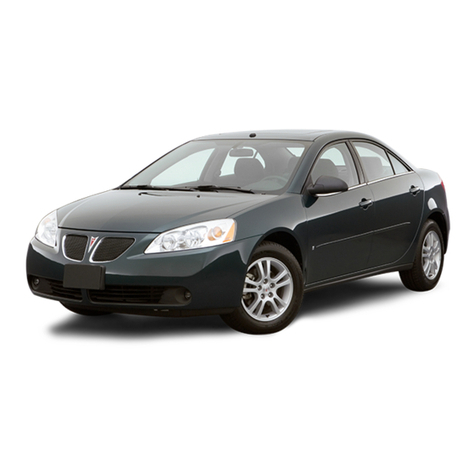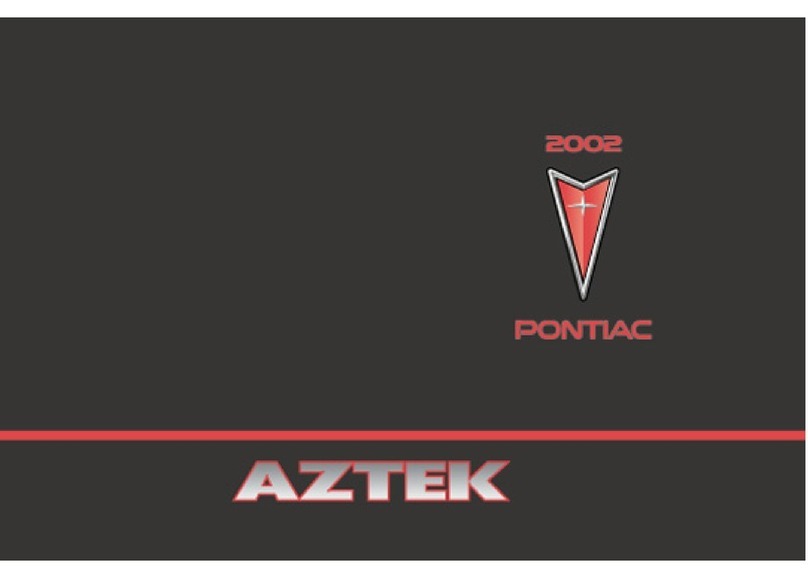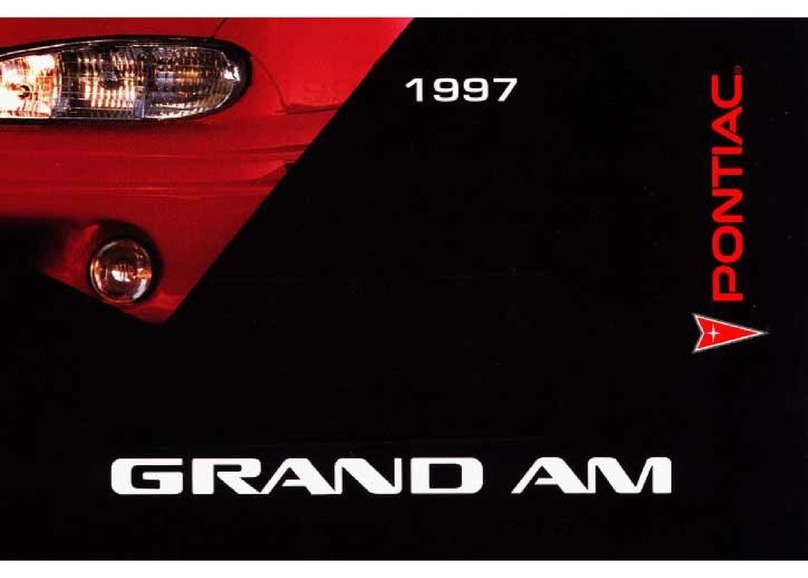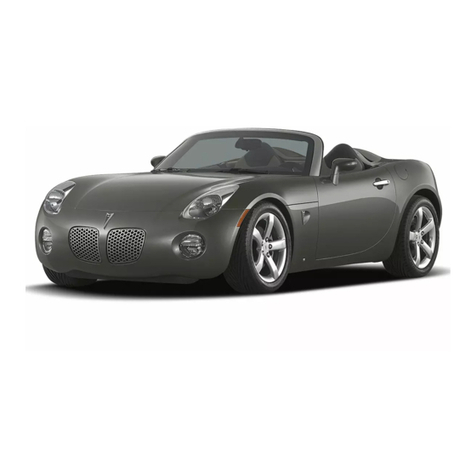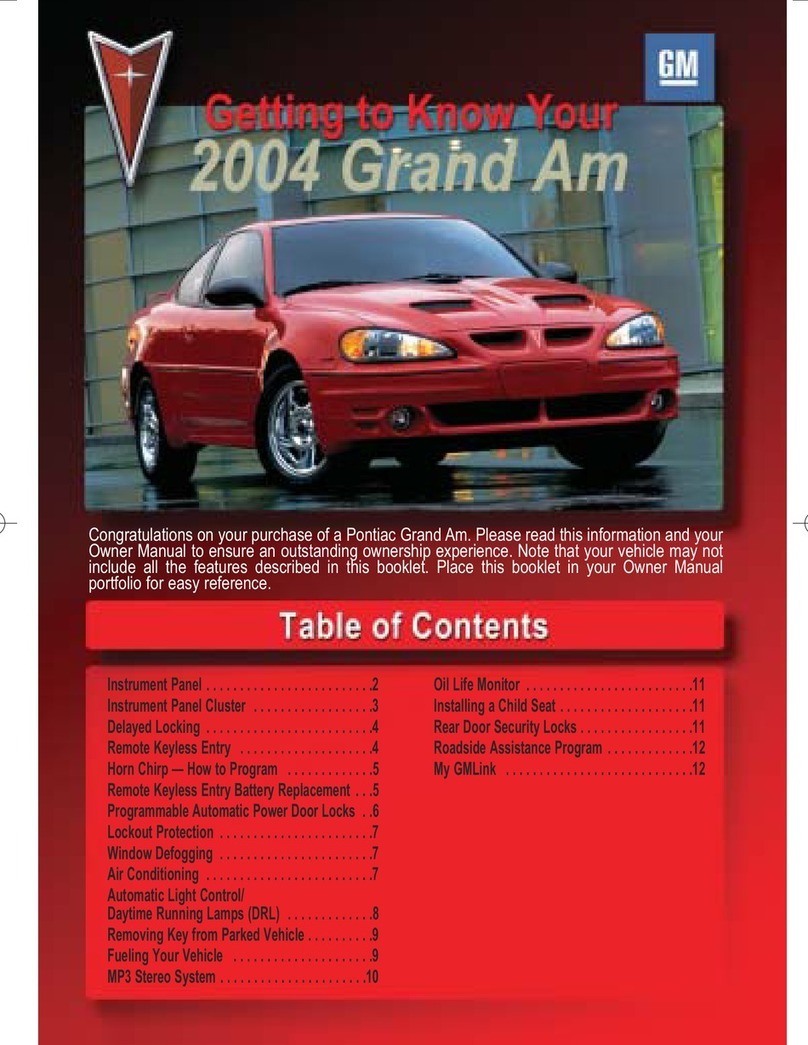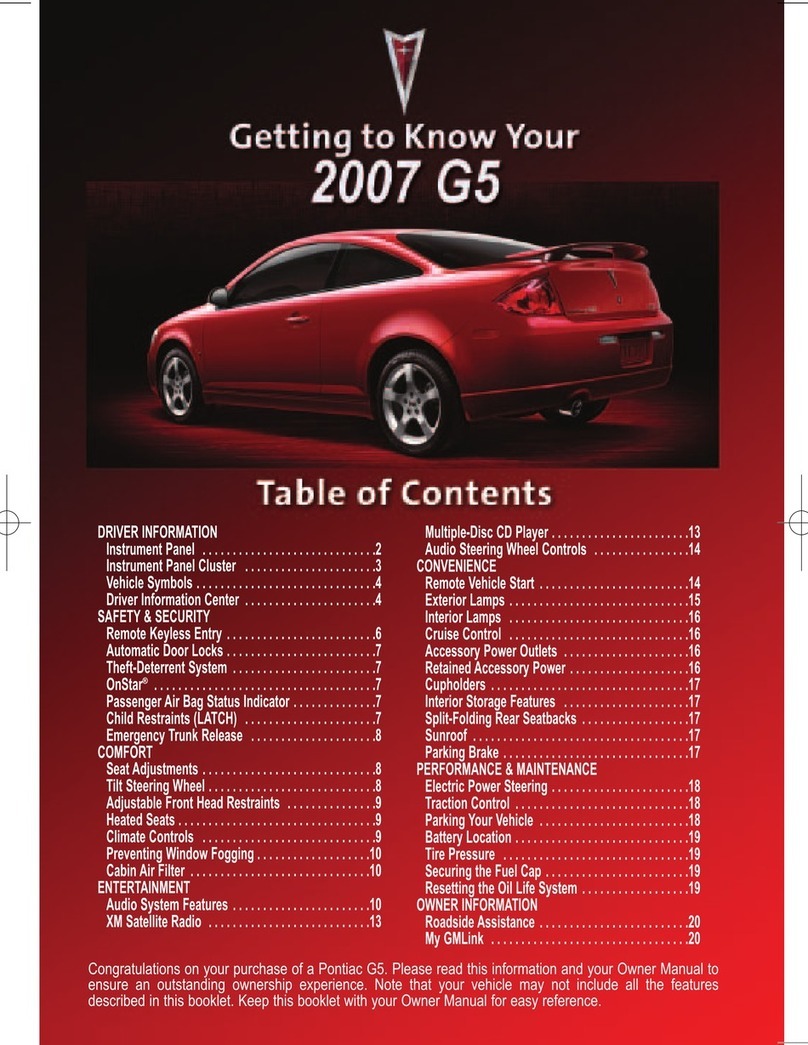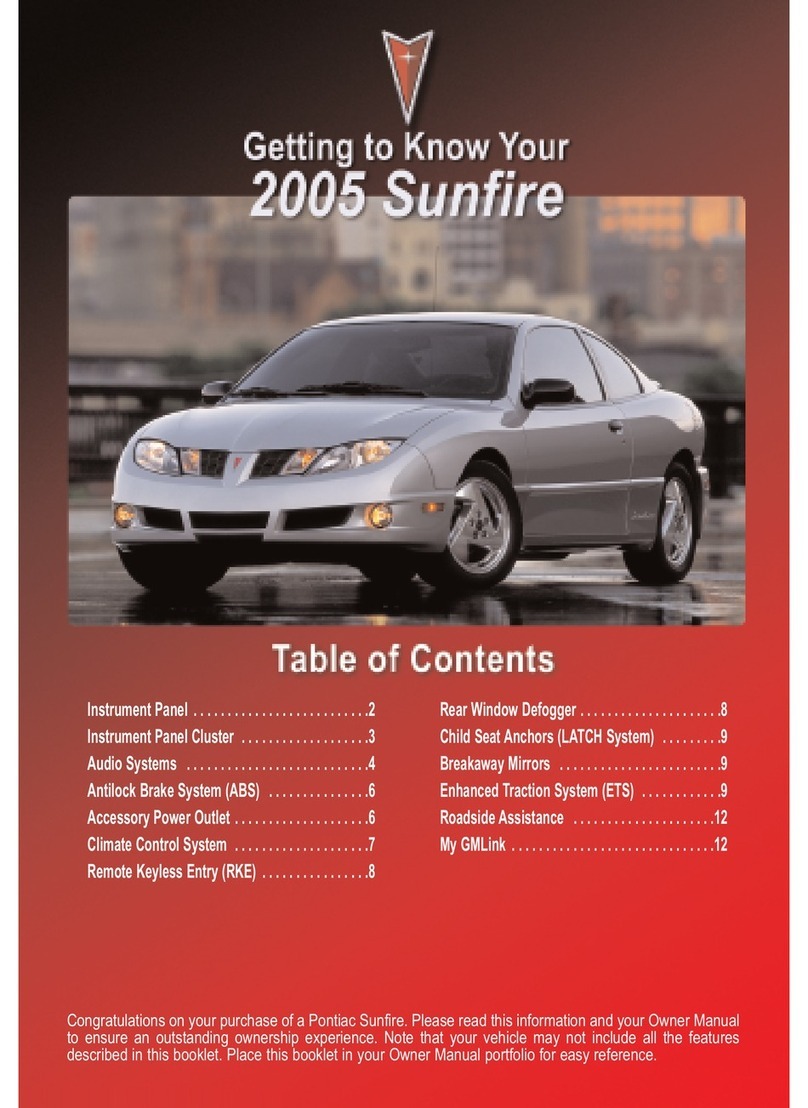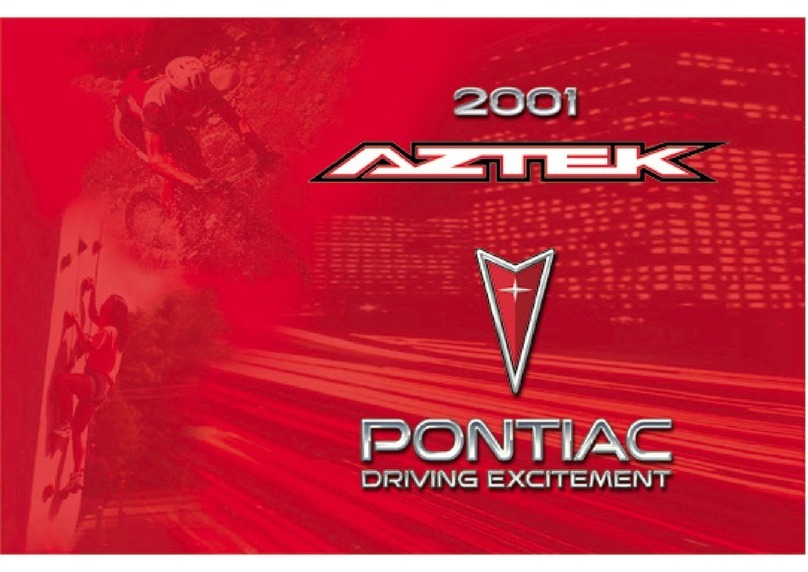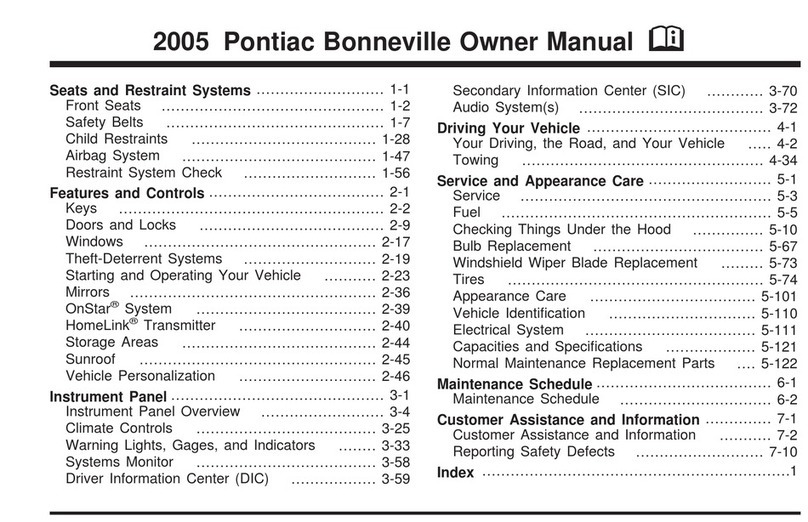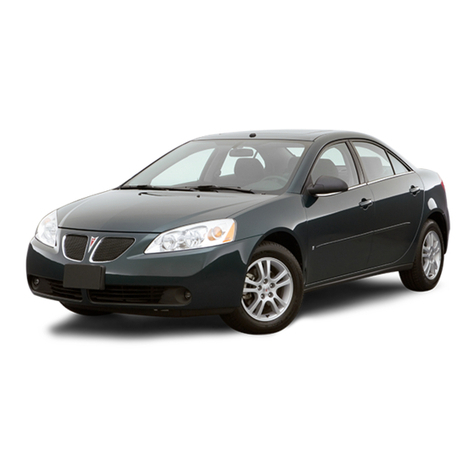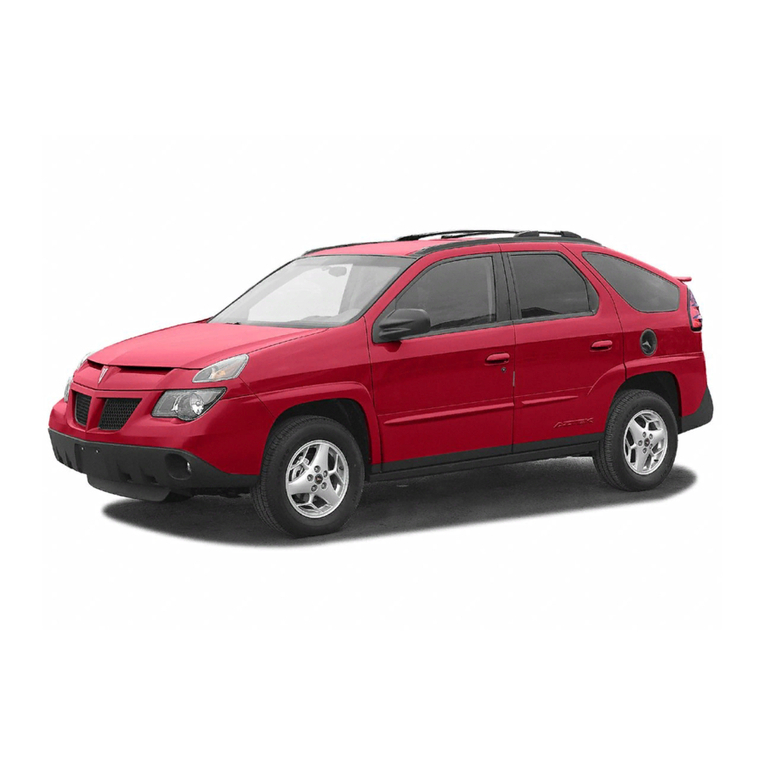1-4
BEFORE DRIVING YOUR CAR
FRONT SEATBACK LATCHES
This car has front seatback latches
designed to hold the seatback upright
when properly latched. The release
le
ver
is
located
at
the bottom, on the outboard side
ofeach front seatback. To tilt the seatback
forward, lift the latch release lever. When
th~
seat
is
returned to the upright
po
sition,
the seatback
is
designed.to latch
by
itself.
Keep seat belt webbing and hardware clear
of
seat parts when you tilt folding seats
forward or backward. This helps prevent
damage to these belt systems.
SEAT BELTS
To help lessen the chance
of
injury
and/or
the severity of injury in
accidents or sudden stops, General Motors
urge
s
that
people riding
in
the
car
be properly restrained
at
all times, using the seat belts provided. This
includes women who
are
pregnant, and children
of
all ages. See following
pages for use
of
restraints by children and pregnant women.
FRONT SEAT LAP-SHOULDER BELT
• Adjust the front seat as needed and sit up straight and well back in
the seat.
• There are a number
of
ways the lap-shoulder belt may be put on
easily. For example.
..
• The lap-shoulder belt may be put on using one hand
by:
{l)
Holding the latch plate and pulling
the
belt as far as it will reach
across your waist (see illustration). (2) Then, hold the latch
plate
at
a right angle to thewebbing.
At
the same
time
slide it up
the belt
by
raising it toward the upper outside corner
of
the
windshield. (3) Finally, pull
the
latch
plate down across the body
and push it into the buckle until it
dicks
.
.• One easy two-handed method
is
to hold the webbing
just
behind
the latch plate using the nearest hand. Then bring it down across
your body. While holding the webbing
taut
with one hand, slide
the latch plate up the belt with the other hand. Finally, hold the
latch plate and push it into the buckle until it clicks.
• Position the
"lap"
portion
of
the belt across the lap as low on the
hips
as possible. Then adjust to a
snug
fit by holding the "shoulder"
portion
of
belt and pulling it
UPWARD
through the latch plate,
until the lap portion
is
snug across the lap. This reduces
the
risk
of
sliding under the belt during an accident.
